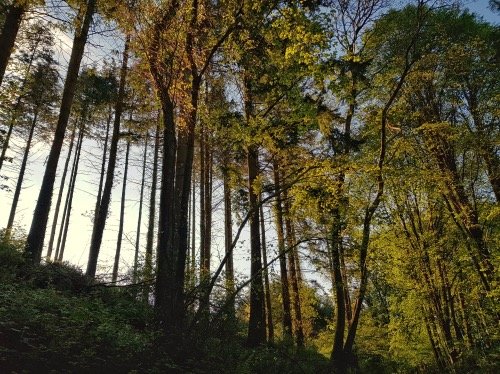
Have you ever visited a rainforest? Chances are, the majority of people reading this will say no. I’d have said the same if you asked me a week or so ago (I’m guessing the rainforest biome at the Eden project doesn’t count!) But it turns out that if you’ve ever visited woodlands on the west coast of England, you may well have visited a rainforest. Because actually, there are dozens of ‘hidden’ rainforests, right on our doorstep! As today is International Day of Forests, it seemed a great opportunity to explore our local rainforest, why they’re important and how we can protect them.
When we think of rainforests, our first thought is usually of hot, humid woodlands in far off exotic places. However, the UK is actually host to a whole host of ‘globally rare temperate rainforests full of special lichens and mosses…found on Britain’s mild, damp Atlantic coastline’. (1) Conservation organisation ‘Plantlife’ is currently working with a whole host of organisations to ‘deliver emergency management that will safeguard some of our most rare and threatened lichen communities in the Atlantic woodlands of Devon, Somerset and Cornwall’. (1). As part of this, they are asking people to get involved with a citizen science project of surveying the health of local woodlands.
As a family we signed up to this project and our eyes were opened to discover that the definition of rainforest was wider than we had previously thought! To classify as a rainforest, a woodland needs to:
I bet a lot of you can think of somewhere that qualifies within a stone’s throw from you (or at least, a short car journey away).
So why is an emergency management fund needed for these woodlands? The causes are multifaceted and different in each woodland but they include air pollution caused by industrial farming, tree diseases such as ash dieback, invasive non-native species (such as laurel and rhododendron) that are blocking out light to the forest floor and climate change causing more extreme weather events. The way we manage woodlands has changed in the last few decades as well. A healthy forest needs a diverse range of ages in trees as well as a good supply of light but modern woodland management techniques have resulted in more homogeneously aged and spaced out woodlands which means fewer microhabitats throughout the area as well as reduced light levels reaching the forest floor. Increased building has also reduced the sizes of woodlands, making it harder for lichens to spread between neighbouring forests. Scientists and conservationists have seen a markedly reduced amount of our rare local mosses and lichens, a key indicator of that our temperate rainforests are in danger.
 What can we do?
What can we do?Luckily, there are a whole host of people and organisations working hard to protect our ancient woodlands. If you want to contribute to keeping our west-county rainforests healthy, get in touch with organisations like Plantlife, Devon Wildlife Trust and Woodland Trust to see what you can do to help. Woodlands thrive on clean air so consider reducing your car travel if you can or visiting woodlands by bike or foot if possible. Finally, spread the word! Tell people about your favourite woodlands and encourage them to discover these places for themselves. The more people who love being in woodlands, the more people who will want to protect them! As our beloved national Grandfather of environmentalism, David Attenborough says
‘No one will protect what they don’t care about; and no one will care about what they have never experienced’ .
Author: Hannah Durdin, Forest School Leader & Administrator
Date: Sunday 21st March 2021
Copyright © Outdoors Group Ltd 2021. All Rights Reserved.
Registered Office: The Outdoors Group, Western Lodge, Crediton, Devon, EX17 3NH. Company number 10755829
Terms & Conditions / Website Terms / Privacy Policy / Sitemap / Built with ♥ by Solve